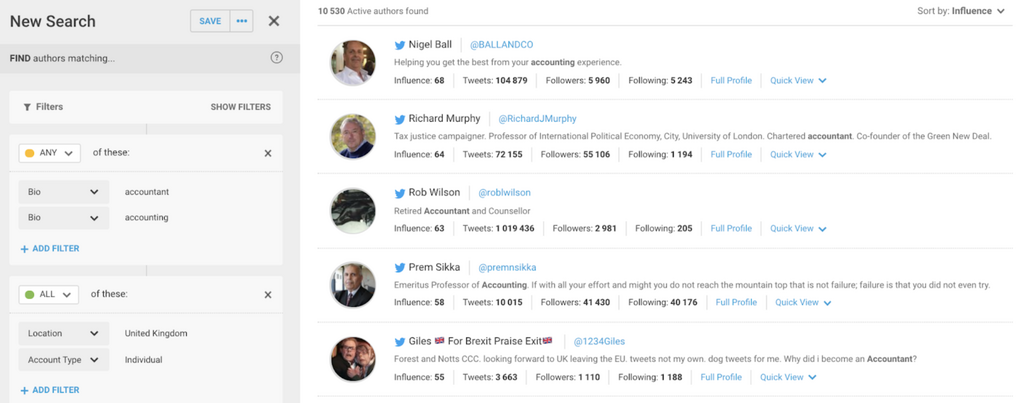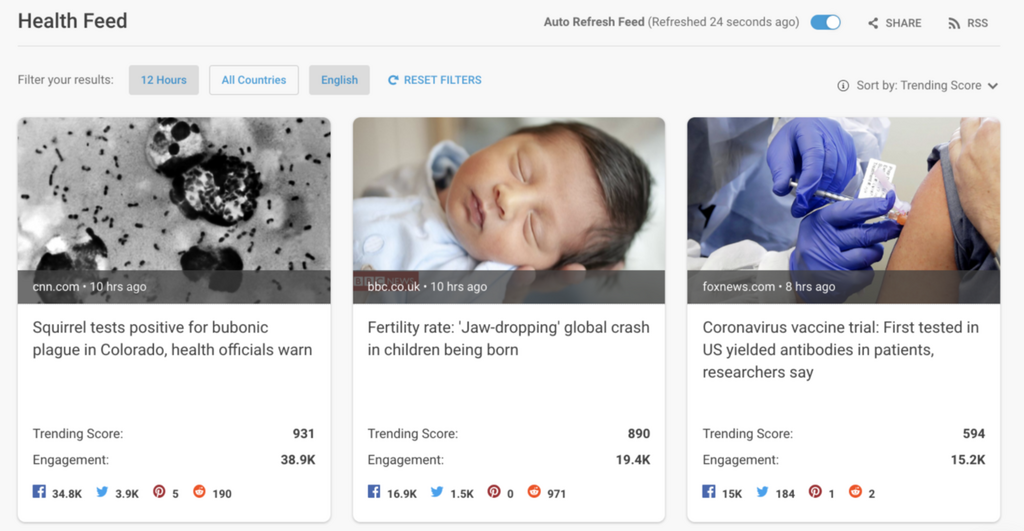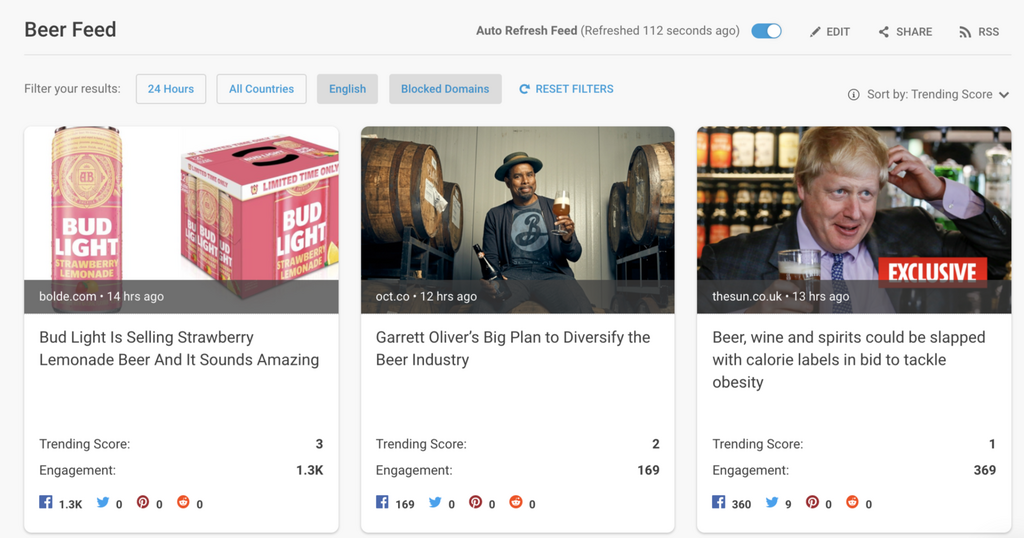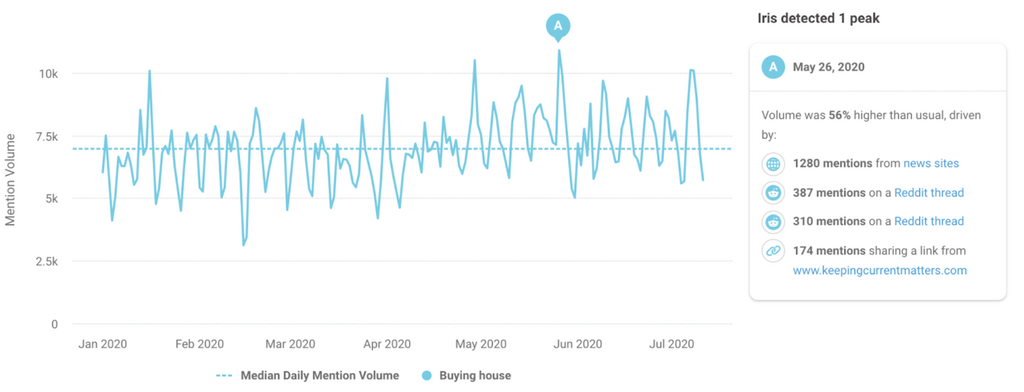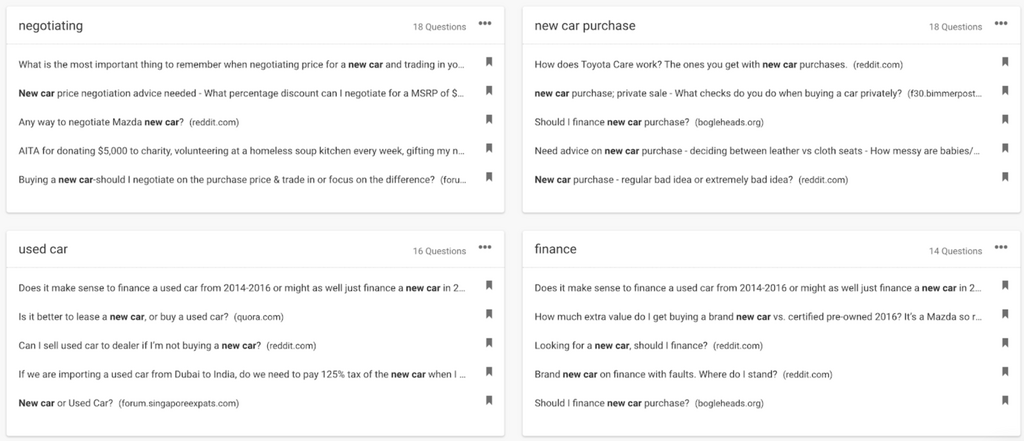Digital Consumer Intelligence in practice
Content Strategy
Learn how digital consumer intelligence can power up your content, from building a strategy through to creating content and measuring its success
Book a meetingGreat content marketers take data seriously.
That doesn’t mean just monitoring clicks – it’s about bringing valuable insights into every stage of the content process, from the creation of a strategy, to content ideation, to monitoring performance and measuring business impact. It’s key to creating content that connects with consumers in a relevant and authentic way – content that gets results.
In this guide, we’ll talk you through building a content strategy and asset plan from scratch, useful ways to analyze competitor content, and how to prove the value of content marketing initiatives to key stakeholders across your organization.
We’ll also share examples, and how-to guides on:


Throughout, Megan O’Donnell, Director, Solutions Strategy at Brandwatch will share best practices and steps to success for content marketers.
Megan consults with current and prospective clients to map objectives to solutions and provide a clear path to successful business outcomes. Content strategy is a common use case for clients and prospects and Megan has a wealth of experience helping businesses build and execute on content plans.
How to approach content strategy
Digital consumer intelligence and content strategy
Digital consumer intelligence is all about blending key data sources to generate consumer insights that lead to better decision making. Savvy content strategists harness the power of digital insights to understand the audience’s wants and needs, get to know what works and what doesn’t, and create relevant content that has a real, measurable impact on the business.
"You can leverage digital consumer intelligence throughout the entire content strategy workflow – from planning and preparation to evaluating what’s working and what’s not. Agile insights better inform ongoing iteration of your content plans.”
Building a content strategy
A great content strategy is informed by a number of factors. The place to start is at the top – the organization’s goals. “It’s important to understand how your team’s priorities ladder into the strategic goals and objectives of the company as a whole,” says Megan.
Through this lens, you can start to build out a picture of what success looks like, and what needs to be communicated.
Next up, and equally important, is to define your audiences. Who are they? What do they want? What do they need? And what behaviors, perceptions, or outcomes are you trying to drive in them? “This all ties into the full plan, and it should help you to not only understand your success, but also to be able to communicate that success and why it matters to your organization as a whole,” Megan says.
Assuming you’re not starting totally from scratch, you’ll likely already have a whole archive of content. Analyzing the performance of this content, benchmarking it, and learning what worked well and what didn’t will help you start to populate a content plan that’s optimized to deliver results.
As Megan points out, the metrics you use to benchmark your content performance are incredibly important:
“What worked and what didn’t in terms of driving discussion? What drove awareness, perception shifts, or action within your key audiences? Whether it’s thought leadership around a specific topic, awareness of a new product, or signing up to attend a webinar or virtual event, mapping the key metrics to your desired outcomes so you can better understand what impacts success is key.”
Competitor content analysis (that’s actually useful)
Analyzing competitors’ content is something many content marketers are obsessed with. But before diving down the rabbit hole, it’s important to know what you’re looking for.
Megan explains that understanding the landscape is important – for example, there might be a new direction one or multiple competitors are moving in that is worth addressing. However, simple metrics like share of voice aren’t always helpful – without context, they aren’t very meaningful.
“What is it that you’re comparing? Is it content around a specific event? Is it a product launch? Is it brand attributes or reputational drivers? Digging deeper helps to understand the ‘why’ behind share of voice and to provide more meaningful insights.”
There’s another kind of analysis that goes hand in hand with learning about your competitors. Megan makes an important distinction between competitors (those in your sector) and your comparators. Comparators might not exist in your sector, but they’re organizations that might have achieved something you’d like your team to excel at. They might be aspirational – much larger organizations, or ones that have seen a lot of acclaim.
Once again, this analysis needs to link to your functional and organizational goals. The only useful insights you’ll get from competitor analysis are those that help you understand how you can meet your objectives.
Note: When thinking about your competitive landscape generally, it’s worth looking beyond known competitors. This could include looking at non-branded conversation online. There’s an example of this below.
Showing the value
Content marketing can be undervalued in a business. It’s important for those in the field to be able to show the thinking behind the content they’re creating, and how that helps the wider organization achieve its goals.
“Demonstrating how your content strategy makes a difference in getting your message out there and connecting with your audiences, and better communicating how your content strategy ladders into organizational goals and impacts business outcomes, can yield a bigger seat at the table.”
In practice: How-to guides for common use cases
Better understand target audience to inform content strategy
What can be learned about your target audiences, their hearts and minds and key careabouts? What are interests, affinities, values? How can you create content that resonates?
In practice, here’s what that might look like.
1. Use Brandwatch Audiences to find consumers who fit your target audience profile
For example, if your target audience is UK-based accountants, you might perform a search to filter Authors by those that have ‘accountant’ or ‘accounting’ within their bio, and they must both be an individual account (as opposed to an organization) and be located in the UK.
Brandwatch Audiences immediately returns a list of over 10,000 individuals who fit the profile, as well as a number of key pieces of information on the audience, like common words that also appear in author bios, interests within the group, and the gender split.
Note: There’s also an option to take this audience and target them immediately with Twitter ads, which will be a great help when it comes to promoting content.
2. Learn about their patterns of activity and key topics
To improve our broader content strategy, we’ll need to go deeper.
Looking in the Conversations tab in Brandwatch Audiences, you’ll find the most relevant hashtags being used by your audience, as well as the sites they’re sharing content from.


By exporting this list and plugging it into Brandwatch Consumer Research, we can learn more about what accountants are posting about, when they’re most active, the key influencers in the conversation, and more.
In just a few minutes, Consumer Research showed us that:
- UK accountants are surprisingly active online on the weekends.
- Not all chatter happens during working hours, even if these accounts are tied to professionals.
- You’re more likely to catch them online in the evening than early in the morning.


3. Get planning
Of course, trends change over time. By looking back in time, perhaps by a few years, you analyze rhythms in activity for UK accountants. Identifying recurring themes and topics and inform your content calendar throughout the year.
How to generate insights for reactive content
“What’s trending?” is a common question, especially in relation to reactive content. But it’s one that’s harder to answer than it sounds.
There are a few ways to approach finding out what’s trending in a way that’s more helpful than just checking your Twitter account every now and again. You could look at what’s trending broadly in a sector, or you could can look at what’s trending within a particular audience. Let’s look at how both of these might work.
What’s trending in my sector?
BuzzSumo is geared towards content marketers. One of its key capabilities is identifying trending content in particular topics over time, whether that’s over months or hours. You can identify the types of stories that generate engagement over time as well as those that you could react to immediately to generate engagement.
It’s easy to look at trending stories in a large sector, like health.
You can also create custom feeds of trending content in areas that are particularly interesting to your business.
What’s trending for a particular audience?
Megan shared how she’s worked on reactive content with a financial services client, using Brandwatch Consumer Research to identify key trends within conversations that are important to the brand’s target consumers.
Look beyond what consumers are saying about your brand, products, or services (and even your sector, generally) to find out what matters to them and to create content accordingly.
Here’s how might it look in practice:
1. Searching for relevant conversations
In Brandwatch Consumer Research, this starts with a query. The below example is one you could use to find people talking about buying a home.
2. Visualize the data
With your query built and collecting data (as far back as 2010, if you wish), you can visualize the data in a wide range of ways. Perhaps the most simple example is to look over time.
In this example, we’re looking at people discussing buying a home in 2020. There are around 7k posts per day to look at – and that’s a lot to analyze manually.
Luckily, AI-assistant Iris can help pick out significant peaks in conversation and what drove them, allowing the analyst to find trends faster.
In the above example, Iris has picked a number of drivers of conversation on a particular day.
3. Find the trends that matter to you
One of the trending stories in the above example is a Reddit thread. Clicking into that thread, we find that it’s all about saving for a house during the pandemic – how much money has been saved by not buying expensive avo toast and coffee?
4. Create action plans accordingly
The above post got a ton of engagement, so a content marketer might consider:
Is it worth creating some content around saving money during lockdown? Is this subreddit a good place to engage with our target audience? Could we react to this thread/trend specifically, today, in a way that adds to the conversation?
Not every trend warrants reactive content. By approaching finding trends intelligently, the chances of your reactive content landing go up.
How to create content that speaks to key customer questions and pain points
We’ve talked about looking at what customers or prospects are interested in. But what about the things they’re struggling with? This is a different kind of content, but one that’s equally important for engaging them at the right moment.
“It’s important to know what kind of questions people are asking. BuzzSumo can help shape your content strategy by helping you understand what questions people are asking around topics or categories.”
As we said above, BuzzSumo is specifically made for content marketers. One feature focuses on the questions people are asking about key topics – invaluable information for marketers looking to address questions about their own products or services as well as broader issues.
Here’s how that might look in practice.
1. Create your search
In BuzzSumo, searching for a topic is really easy. Let’s say you’re looking for people talking about buying a new car. The search could be as simple as this:
2. Find the key themes
There are a few ways to look at the key questions around a topic. You can look at kinds of questions, like ‘what’, ‘how’, ‘when’ etc. You can also look at key themes coming up in the content.
For this example we looked at themes, and the platform surfaced a whole bunch of key questions that are asked about new cars, in relation to particular parts of consumers’ purchase considerations.
3. Generate content that speaks to customer and prospect needs
The above is particularly helpful for content marketers looking to improve their search traffic. Addressing these key questions in content to attract searches around them will bring more people to your site. If you can answer questions in a way that sets your business apart, this should help with conversions too.
Further resources
Above we’ve given you a taste of what’s possible using Brandwatch’s suite of digital consumer intelligence solutions. But there’s so much more to explore!
Here are some further resources to sink your teeth into:
